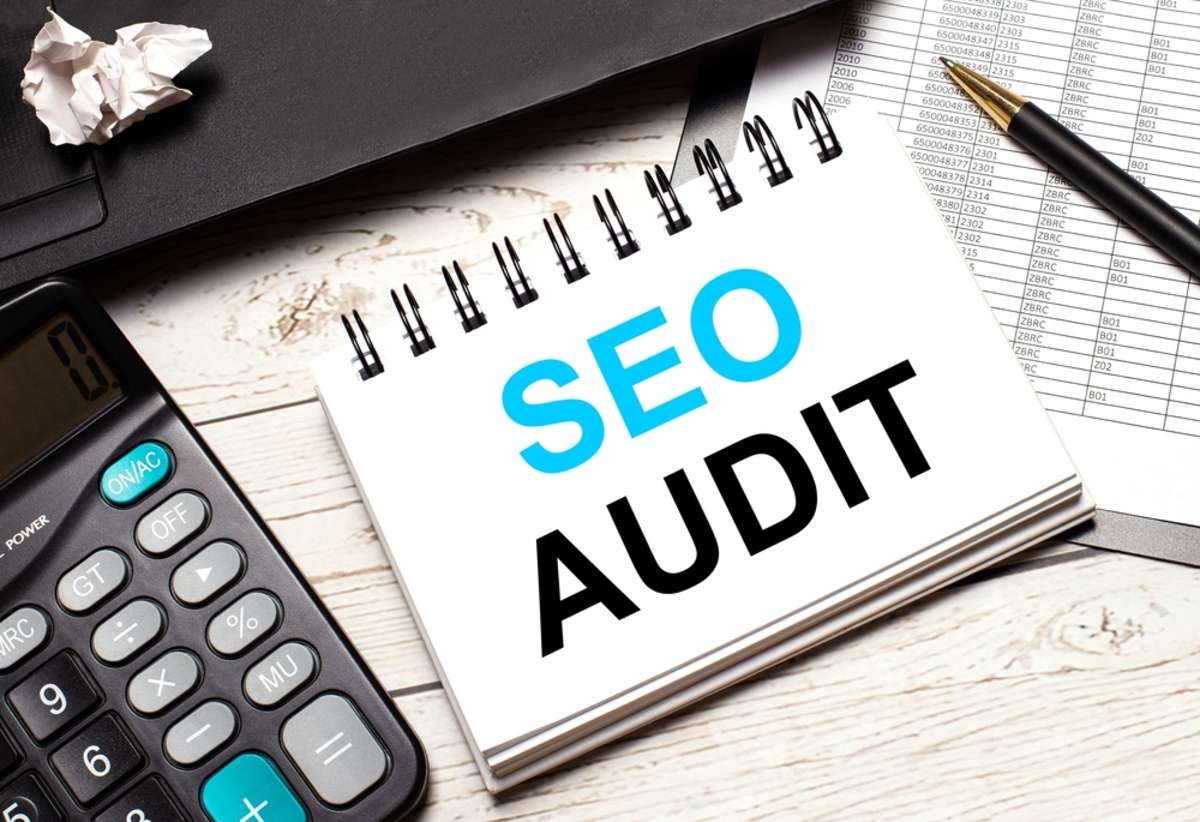SEO audit is a process that analyzes the quality of your web presence in relation to best practices. It is the first step towards developing a results-producing implementation plan.
The audit should highlight all the issues touching the foundations of the site that impact the performance of an organic search. The following are what the SEO audit will bring out:
- Technical SEO issues
- Website structure issues
- On-page SEO issues
- Potential off-site problems
- User experience issues
- Content gaps and opportunities
Competitive marketplace insights So, the audit is a regular procedure and should again be conducted regularly as an actual “health check” for your website.
Why Do You Need an SEO Audit?
Understanding Your Progress
Just like in engineering, if you can’t measure it, you can’t improve it. The same goes for SEO. If you’re not tracking your efforts, you won’t know what’s working.
Starting Point
To see how well your SEO strategies are working, you need to know where you’re starting from. That’s where an SEO audit comes in. It gives you a clear picture of your website’s current state to build on what’s working and fix what’s not.
Important Tools you need to do SEO Check
You need special tools to check how well your website is doing on search engines. Here are some free ones to start with:
- Ahrefs Webmaster Tools (AWT)
- Google Search Console (GSC)
- Google Analytics (You don’t have to use this, but it is helpful)
Checking Your Website’s URL Configuration
Verify Single URL Usage
Ensure that your website is accessible using only one URL format. Sometimes, your website’s www and non-www versions can be accessed. For example:
Preferably One URL
Ideally, your website should be reachable using just one of these formats. If someone tries to access it using the www version, they should automatically be redirected to the non-www version, or vice versa.
Importance of Single URL
It’s crucial because having both versions accessible can lead to duplicate content problems if search engines like Google index both.
Checking for SSL Certificate Usage
What SSL Does
An SSL (Secure Socket Layer) certificate encrypts all communication between users and your website. This ensures that any information transferred is secure, making it harder for hackers to access.
Standard for Security
SSL is necessary for websites that gather personal data, especially those handling payments. It’s crucial for keeping data safe.
SEO Impact
Search engines like Google now consider SSL certificates when ranking websites. Having a properly configured SSL certificate can boost your site’s ranking.
You can manually confirm if your website has an SSL certificate by looking at the URL. If it starts with “https,” then SSL is in use. But if it begins with “http,” then SSL isn’t being used.
Checking WordPress Visibility Settings
During Development
While your website is still in progress, you wouldn’t want search engines to index it. WordPress has a feature for this under Settings → Reading, which prevents search engines from crawling your site.
Easy to Forget
It’s easy to forget to disable this setting once your site is complete. If you forget, search engines won’t index your site even after it’s ready for visitors.
Immediate Action
If you’ve mistakenly enabled this setting, disable it immediately. This tells search engines to promptly index your website for readers/viewers to access.
Checking Your Permalink Structure in WordPress
What Permalinks Do
Permalinks decide how WordPress forms URLs for your posts. It’s crucial to consider two things when selecting your preferred permalink structure:
- The format of the URL.
- The URL itself
Simple and Effective
The best permalink structure is often your website.com/blog/post-name. Your URL structure is evaluated during an SEO check with Rank Math for WordPress.
Manual Check
You can manually inspect your URL structure by opening any post and reviewing its URL format.
Short and Concise URLs
It’s important to keep your URLs short for better SEO. Google and other search engines and users prefer shorter URLs as they are clearer and lead to higher click-through rates.
Editing Permalinks
You can edit the automatically generated permalink for your posts or pages. Shorten it to a concise and descriptive version.
Fixing Issues
If your URLs don’t follow the /blog/%postname/ structure, Rank Math for WordPress will alert you. To resolve this, go to WordPress Settings → Permalinks, and choose the Post Name option. Remember to save your changes.
Warning: Changing your permalink structure will alter the URLs of existing posts, possibly causing 404 errors. It’s best done on a new website or with proper redirections from old URLs to new ones to avoid issues.
Checking Website Performance
Fetching Content
When someone visits your site, their computer asks your web host’s server for things like images and data, which can slow things down.
Performance Reporting
Rank Math for WordPress SEO Analysis reports on how quickly your site loads.
Fixing Slow Load Times
Without caching, your site might load slowly, causing visitors to leave. Google now considers page speed when ranking sites.
Caching Solutions
Plugins like WP Rocket or W3 Total Cache can help speed up your site by storing commonly accessed data, but setting them up can be complex. Guides can help with the process.
Understanding Server Response Time
Performance Assessment Fundamentals
Responsiveness Evaluation
- Definition: Analyzing how promptly your server reacts to incoming requests.
- Key Metric: Time to First Byte (TTFB) – the duration taken for the server to transmit the initial byte of data in response to a request.
Resolving Slow Server Response
- Identifying and Solving Delays
- 1. Identifying Slow Response:
- Indicators: Prolonged TTFB durations signal sluggish server responses.
Troubleshooting Strategies
- Evaluate Hosting Providers: To enhance server performance, consider migrating to a more responsive hosting provider.
- Resource: Explore Cloudways’ comprehensive guide on optimizing server response times for additional assistance.
Checking Google Search Console Verification
Understanding Google’s Tools
Google provides tools called Google Search Console for website owners to address indexing issues and gather insights. Similar to Google Analytics, it’s essential to connect your website to it.
Importance of Connection
Linking your website with Google Search Console allows you to resolve issues and access additional website data proactively.
Simplified Access with Rank Math SEO
With Rank Math SEO for WordPress, you can conveniently view important metrics directly within WordPress, eliminating the need for separate logins to Google Search Console.
Automatic Verification Check
During an SEO Analysis with Rank Math SEO for WordPress, it automatically verifies if your website is connected to Google Search Console.
Resolving Verification Issues
Why It’s Essential
Connecting to Google Search Console provides valuable website improvement and issue resolution data.
Easy Verification with Rank Math SEO
If you’re using Rank Math SEO for WordPress, verifying your website with Google Search Console is quick and straightforward.
Alternate Verification Process
For non-Rank Math SEO users, the verification process involves logging into Google Search Console, selecting the “Add Property” option, entering your website’s address, and following the suggested verification methods.
Finding and Fixing Broken Links
Dealing with Website Growth
As your website expands, adding, removing, and updating content becomes routine, often resulting in broken links. Users encountering broken URLs are greeted with a 404 error.
User Experience Impact:
While Google doesn’t directly penalize for 404 errors, they can still harm user experience. It’s crucial to actively search for and repair broken links promptly.
Solution
Automate the process of identifying broken links on your website using a 404 Monitor tool.
Accessing the 404 Monitor
Navigate to the 404 Monitor section to access a list of broken links causing 404 errors on your site. You can sort, search, and fix them from there by redirecting to new posts or pages.
Alternative Solutions
If you’re not using a monitoring tool:
- Google Search Console: Check the Page indexing report within Google Search Console to identify errors, including 404s.
- Plugins: Utilize plugins like the Link Checker Plugin to detect potential broken links on your website automatically.
Content Optimizations
- Content is crucial for attracting search engine traffic, and optimizing it is key.
- Simplifying the process of identifying areas for improvement in your content makes it easier.
- Assuming you’re familiar with writing SEO-friendly content, focus on the following sections in the SEO Analysis to enhance your content.
Understanding Focus Keywords
- Identifying Missing Keywords
- Locating the Report: In Rank Math’s SEO Analysis, the Focus Keywords report highlights posts, pages, and products lacking focus keywords.
- Importance of Keywords: If you’re unsure about focus keywords, you can learn more about Keyword Research to understand their significance.
Fixing Content Optimizations
- Addressing Missing Keywords
- Adding Focus Keywords: Visit each page or post without a focus keyword and add one or more in the Rank Math SEO Meta Box.
- Utilizing Insights: Wait for Rank Math SEO to process the keywords, then use its insights to optimize your content for better search results.
Title Optimizations
Significance of Title Keywords
Using focus keywords in post titles aids in SEO and user understanding.
Identifying Missing Titles
Rank Math SEO flags posts where focus keywords are absent from titles.
How to Resolve This
Ensuring Keyword Integration
Review recommendations from Rank Math SEO and ensure titles accurately reflect content and target keywords.
Pro Tip
Accurate focus keyword setting is essential for accurate title optimization suggestions. After setting focus keywords for all relevant posts, rerun the audit to uncover additional optimization suggestions.
If you want to need SEO Audit Service please get in touch with US Search Engine General Team



